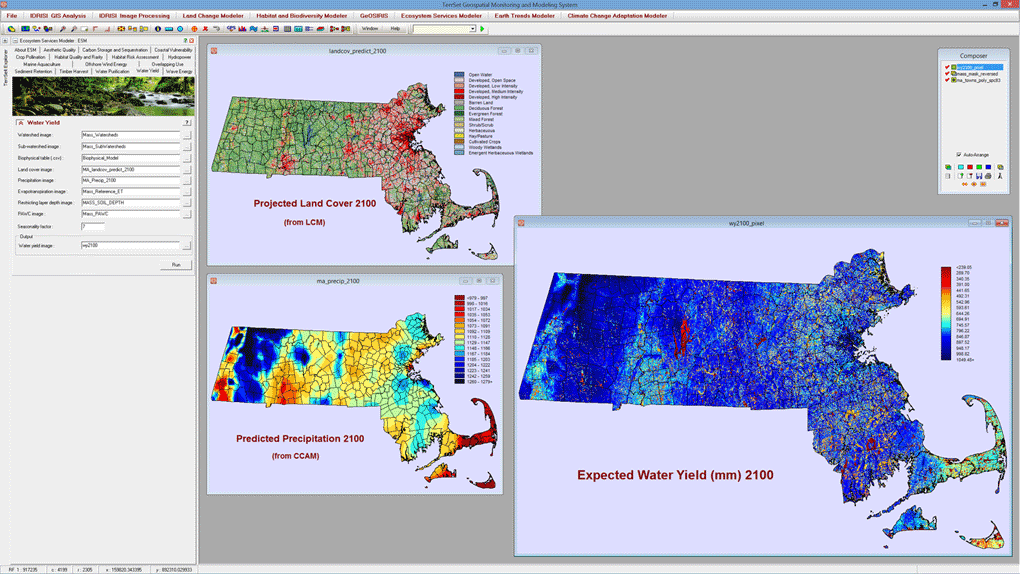TerrSet is an integrated geospatial software system for monitoring and modeling the earth system for sustainable development. The TerrSet system incorporates the IDRISI GIS Analysis and IDRISI Image Processing tools along with a constellation of vertical applications. TerrSet offers the most extensive set of geospatial tools in the industry in a single, affordable package. There is no need to buy costly add-ons to extend your research capabilities.
Along with the software features mentioned below, TerrSet also includes utilities for import and export of all major file and imagery formats along with comprehensive documentation and tutorials.
TerrSet 2020 System Requirements
TerrSet 2020 Software Features
The IDRISI GIS tool set offers over 300 analytical tools, primarily oriented to raster data, for the manipulation of geospatial datasets for the exploration of our rapidly changing world.
The IDRISI Image Processing System in TerrSet is an extensive set of procedures for image restoration, enhancement, transformation and classification of remotely sensed imagery.
Land Change Modeler (LCM) is an innovative land planning and decision support software tool for land change analysis and prediction with a special facility for REDD project-level modeling.
Habitat and Biodiversity Modeler
The Habitat and Biodiversity Modeler (HBM) is a vertical application intended for habitat assessment, landscape pattern analysis and biodiversity modeling.
GeOSIRIS is a tool that quantifies and maps the impacts of national-level REDD projects on deforestation, carbon emissions, agricultural revenue, and carbon payments.
The Ecosystem Services Modeler (ESM) is a spatial decision support system for assessing the value of natural capital for sustainable development.
The Earth Trends Modeler (ETM) is an integrated suite of tools for the analysis of image time series data associated with Earth Observation remotely sensed imagery.
Climate Change Adaptation Modeler
The Climate Change Adaptation Modeler (CCAM) is suite of tools for modeling future climate and assessing its impacts on sea level rise, crop suitability and species distributions.
TerrSet 2020 System Requirements
TerrSet is an object-oriented system designed for professional-level use on platforms employing the Microsoft Windows operating environment.
- Windows 8.1 and above, or Windows Server 2008 and above
- Microsoft ACE 2010 or Microsoft Office 2010 or later
- 1.3 GB hard drive space for application
- 7.5 GB hard drive space for tutorial data
- 8 GB RAM, 16 GB or more recommended
- HD display (1920×1080) or greater recommended




